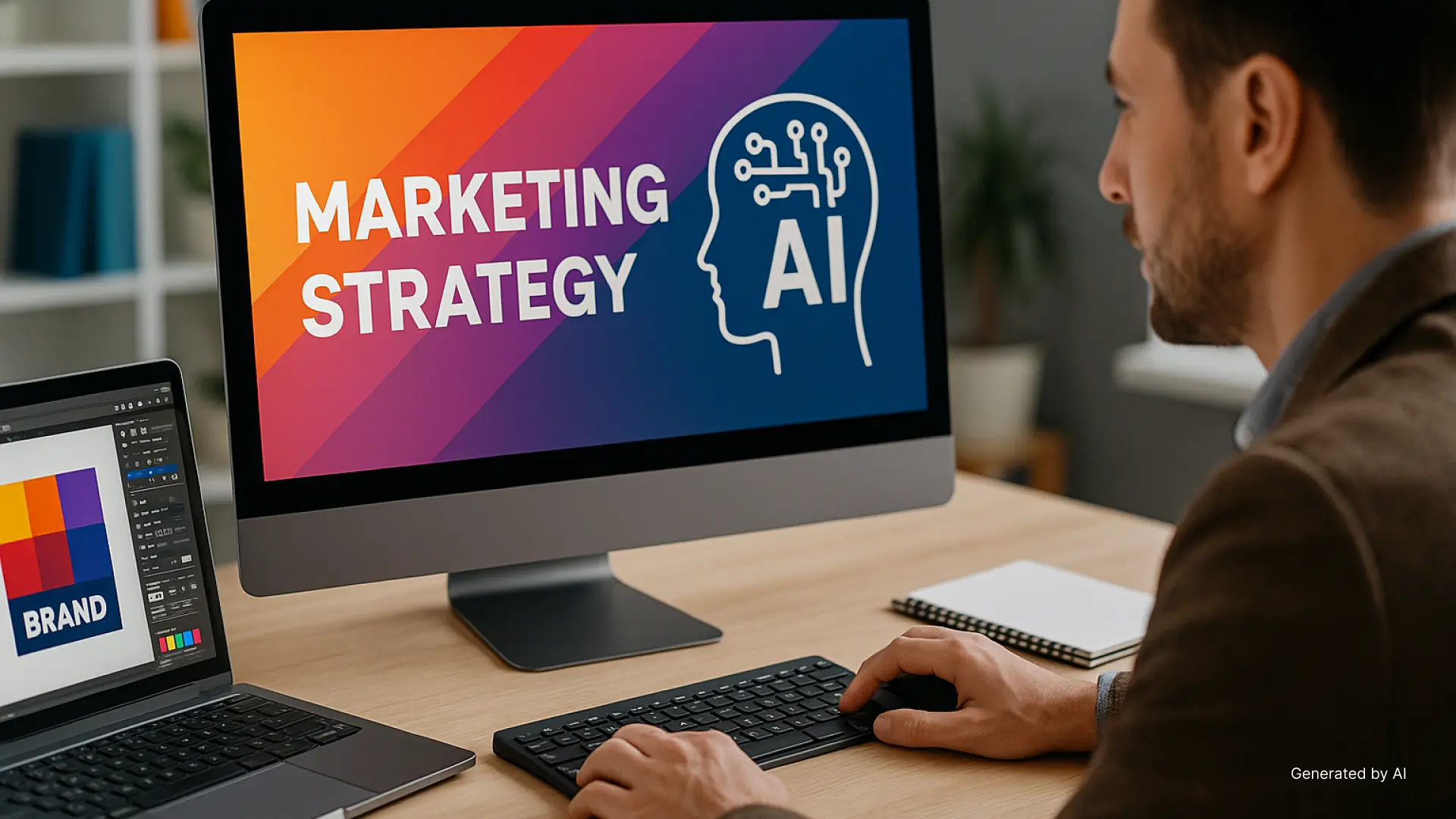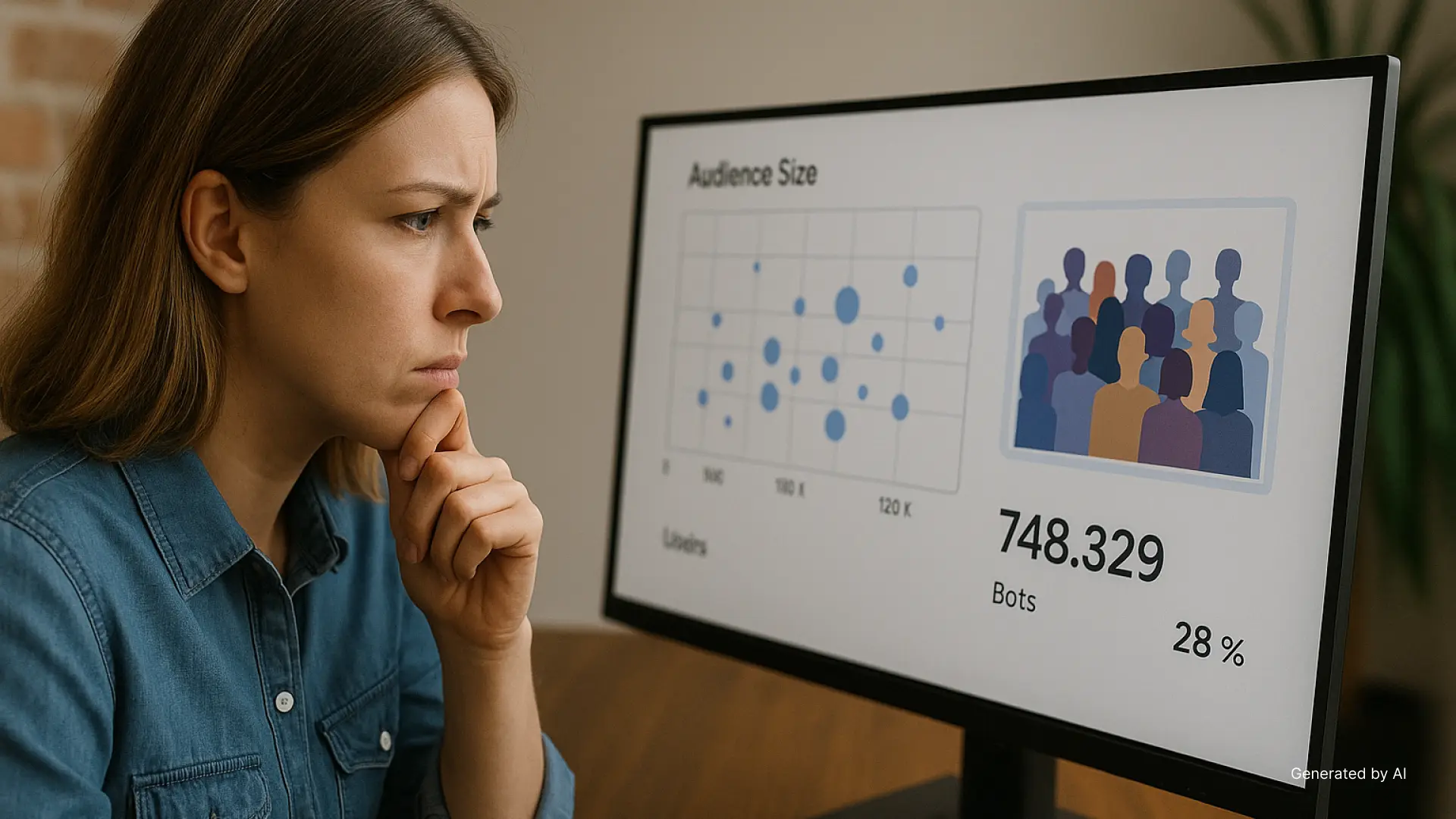The Future is Now: How Meta Ray-Ban AI Smart Glasses Redefine Interaction and Why Your Brand Needs a Smart Digital Strategy
The landscape of personal technology is undergoing a profound transformation, moving beyond the ubiquitous smartphone to embrace more intuitive, integrated wearables. This shift is ushering in an era where digital interaction becomes seamlessly woven into the fabric of daily life, often without the user even realizing it. At the forefront of this evolution stands the Meta Ray-Ban AI Smart Glasses, a pivotal innovation that elegantly merges fashion, cutting-edge technology, and artificial intelligence. These glasses are not merely gadgets; they represent a fundamental redefinition of how individuals engage with the digital world, offering a glimpse into a future where technology is truly invisible.
This report delves into the revolutionary features and profound real-world implications of Meta Ray-Ban AI Smart Glasses. It will underscore the critical necessity for businesses to proactively adapt their digital marketing strategies to this rapidly evolving technological environment. A comprehensive and forward-thinking digital marketing approach is no longer merely advantageous but an absolute prerequisite for achieving success and maintaining relevance in the burgeoning age of wearable AI. The success of devices like the Meta Ray-Ban glasses is significantly influenced by their ability to blend into everyday aesthetics, appearing as classic eyewear rather than conspicuous tech. This emphasis on subtle design, as noted in various assessments, marks a deliberate move to overcome past adoption hurdles associated with bulky, less fashionable smart glasses. This focus on “invisible technology” suggests that future wearable innovations will prioritize seamless integration with personal style, necessitating marketing campaigns that highlight lifestyle enhancement over purely technical specifications. For digital marketing professionals, this means crafting messages that showcase utility and sophistication without making the product seem overly complex or intimidating.
The Global Unveiling: Meta Ray-Ban AI Smart Glasses in 2025
Meta embarked on its most extensive hardware expansion to date in 2025 with the strategic launch of its Meta Ray-Ban AI Smart Glasses in key global markets. This significant push saw the glasses introduced in India, Mexico, and the United Arab Emirates in May 2025. This expansion dramatically increased Meta and EssilorLuxottica’s market reach, particularly leveraging India’s immense population. Crucially, all these new markets received the glasses with full AI capabilities enabled from the outset.
This strategic market expansion is designed to significantly broaden Meta’s user base and solidify its position as a frontrunner in the digital wearables sector. This move is also foundational for Meta’s future augmented reality (AR) initiatives, where competition is anticipated to intensify. Notably, Meta has begun officially referring to these devices as “AI glasses” rather than “smart glasses” in its listings. This subtle yet significant terminological shift underscores the company’s commitment to highlighting the integrated artificial intelligence capabilities as the core differentiating factor of the product.
While the sheer population of India presents an enormous market opportunity, certain considerations exist regarding digital infrastructure. Some assessments indicate that India’s digital connectivity and accessibility options are less developed compared to other markets, which could potentially present challenges for widespread adoption of advanced wearables. This situation suggests that Meta is undertaking a long-term investment, focusing not just on product rollout but also on fostering market readiness and digital integration. For digital marketing specialists, this implies the need for highly localized and fundamental marketing efforts in such regions. Campaigns must go beyond merely showcasing product features; they must articulate the inherent value of digital integration and enhanced accessibility. This approach may require substantial investment in content creation and community engagement to overcome initial adoption barriers and educate the market effectively.
Beyond Vision: Unpacking the Revolutionary Features
The Meta Ray-Ban AI Smart Glasses are engineered with a suite of advanced features that extend far beyond traditional eyewear, transforming them into a sophisticated personal assistant and content creation tool.
A. The Intelligence Within: Meta AI Capabilities
At the core of these smart glasses lies the integrated Meta AI, a powerful voice-activated assistant that responds to the prompt “Hey Meta”. This hands-free interaction allows users to effortlessly retrieve information and manage tasks without needing to pull out their smartphone. A significant enhancement in 2025 is the multimodal AI with vision capabilities, enabling Meta AI to “see what you see” through the integrated camera. This allows for contextual queries and visual searches, meaning users can ask questions about their immediate surroundings. For instance, the glasses can identify landmarks, translate signs, offer recipe suggestions based on visible ingredients, or provide information about objects in view. Furthermore, “Live AI” sessions facilitate natural, ongoing conversations where the AI continuously processes visual input, assisting with complex tasks like meal planning or navigating a new city.
A particularly impactful feature rolling out in 2025 is live translation. This enables real-time translation across English, Spanish, French, and Italian, even functioning offline if language packs are downloaded. This capability represents a substantial leap towards breaking down communication barriers in diverse environments. Beyond translation, 2025 updates to Meta AI functionality include the ability to query weather, air quality, and UV index information, alongside improved Meta AI voices for more natural interactions. The glasses can also scan QR codes and initiate calls or messages to phone numbers seen through the lenses. Integration with popular music services like Spotify, Apple Music, Amazon Music, and Shazam is expanding, allowing for voice-controlled music playback.
B. Capture & Share: A New Perspective
The Meta Ray-Ban AI Smart Glasses offer a unique first-person perspective for capturing and sharing moments. They are equipped with a 12MP ultra-wide camera, capable of capturing high-quality photos at 3024×4032 pixels and recording 1080p videos up to 60 seconds. Some specifications also indicate video acquisition at 1440×1920 pixels at 30 frames per second. For audio, a five-microphone array ensures crystal-clear voice capture and immersive audio recording for videos. This is particularly effective for capturing conversations while moving, with some noise reduction capabilities for background sounds. A standout feature is the hands-free livestreaming capability, allowing users to broadcast directly to Facebook or Instagram for up to 30 minutes from their own point of view, with the flexibility to switch between the phone and glasses cameras.
C. Seamless Integration: Audio, Connectivity & Design
The design philosophy behind the Meta Ray-Ban AI Smart Glasses prioritizes seamless integration into everyday life. Discreet open-ear speakers, enhanced with improved bass and clarity, allow users to listen to music and take calls without becoming disengaged from their surroundings. User feedback consistently praises the call quality, highlighting its effectiveness even in noisy environments.
Under the hood, the glasses are powered by Qualcomm’s Snapdragon AR1 Gen1 chip and come with 32GB of internal storage, capable of holding over 500 photos or 100 30-second videos. Battery life offers up to 4 hours of active use on a single charge, with the accompanying charging case extending total usage to an impressive 32-36 hours. Connectivity is robust, featuring Wi-Fi 6 and Bluetooth 5.2. The glasses also carry an IPX4 water-resistance rating, making them suitable for everyday use and minor splashes. Weighing approximately 48-50 grams, they are designed for comfortable, extended wear.
The iconic design is a cornerstone of the product’s appeal. Available in classic Ray-Ban styles such as Wayfarer, Skyler, and Headliner, the glasses offer a variety of frame colors and lens options, including sun, clear, polarized, Transitions®, and prescription lenses. This design is frequently lauded for its discreetness and uncanny resemblance to traditional eyewear, allowing the technology to blend seamlessly into the user’s personal style.
The sophisticated capabilities of these glasses, particularly their hands-free capture and livestreaming functions, bring forth important considerations regarding privacy. While a small white LED light is designed to indicate when the device is recording, its effectiveness, especially in low-light conditions, has been a subject of discussion. Further, Meta’s 2025 policy updates expand AI data collection, making AI features default and storing voice recordings by default. This raises legitimate concerns about individuals, including bystanders, inadvertently contributing to large AI datasets. This situation presents a significant ethical challenge for marketing these devices. While the innovative features are compelling, consumers are increasingly sensitive to data privacy. Marketing campaigns must not only highlight the convenience and technological prowess but also transparently address privacy features and user control mechanisms. Brands promoting products that integrate such technology need to carefully consider how to build and maintain trust, navigating public perception by emphasizing user control over personal data and adhering to ethical AI practices. This also creates a distinct opportunity for agencies to develop and offer specialized “ethical marketing” or “privacy-first communication” strategies.
Real-World Adoption: User Experience and Market Landscape
The adoption of Meta Ray-Ban AI Smart Glasses in the real world has been met with a mix of enthusiastic praise and constructive feedback, reflecting the nascent but rapidly evolving nature of wearable AI.
A. User Insights: The Pros and Cons
Users consistently laud the convenience offered by the hands-free photo and video capture capabilities of the glasses. The excellent call quality and immersive open-ear audio experience are also frequently highlighted as significant advantages. Many users appreciate the discreet design, which allows the glasses to pass off as conventional eyewear, making them socially acceptable for everyday wear. For content creators and those seeking a seamless way to capture life’s moments, these glasses are often described as a “game changer”.
However, the user experience is not without its challenges. Common complaints include occasional connectivity issues, such as Bluetooth disconnections and difficulties initiating calls. Users also note limitations in framing shots accurately due to the fixed camera perspective, and the process of manually importing captured content can be cumbersome. While battery life is generally considered decent for moderate use, continuous camera or audio streaming can significantly drain the power quickly. Some individuals find the glasses slightly heavier than traditional eyewear, leading to discomfort during prolonged wear. The perceived value for money is also mixed, with a segment of users deeming them overpriced despite their advanced features. Additionally, the basic IPX4 water resistance rating limits their use in very wet conditions.
B. The Expanding AI Glasses Market
The market for AI Smart Glasses is experiencing robust growth. Projections indicate that the Global AI Glasses Market is expected to reach USD 2,308.6 million by 2032, growing from USD 857.4 million in 2025, at a compound annual growth rate (CAGR) of 15.2%. Within this expanding market, smart glasses are anticipated to maintain a dominant position, holding an estimated 41.2% market share in 2025.
Meta’s influence in this sector is undeniable. The success of Ray-Ban Meta smart glasses fueled a remarkable 210% year-over-year surge in global smart glasses shipments in 2024, with Meta alone securing over 60% of the market share. This strong performance is expected to drive a projected 60% year-over-year growth in 2025, with a sustained CAGR exceeding 60% through 2029.
Following Meta’s significant success, the market is bracing for a substantial influx of new entrants, with 2025 anticipated to be a “battle of hundreds of smart glasses”. Major tech giants such as Xiaomi, Samsung, Baidu, and ByteDance are poised to enter this competitive arena, alongside other notable players like Xreal, Amazon, Solos, Loomos, and Halliday. Google is also actively developing its own augmented reality glasses.
These competitors are differentiating their offerings through varied feature sets. For example, Xreal Air 2 focuses on an immersive visual AR display, while Amazon Echo Frames prioritize Alexa integration and a subtle design without a camera. Solos AirGo V stands out with a removable camera module for enhanced privacy and integration with ChatGPT-4o. Loomos AI Glasses aim to compete with higher camera specifications (16MP, 4K photos) and also offer ChatGPT support. This indicates that the market is not uniform; different companies are prioritizing distinct features based on perceived user needs and use cases.
This diverse competitive landscape, where different companies emphasize unique features such as AR displays, voice assistants, privacy-focused cameras, or high-resolution capture, points to a clear fragmentation of the smart glasses market based on primary use cases and specific user demands. This fragmentation suggests that while Meta currently holds a dominant position, there are substantial opportunities for niche players to capture specific market segments by catering to specialized needs. For digital marketing, this translates into a critical requirement for highly targeted campaigns that precisely articulate unique selling propositions (USPs) tailored to distinct user personas. For instance, marketing efforts might emphasize content creation capabilities for one segment, privacy controls for another, or smart home integration for a third. A generic, “one-size-fits-all” marketing approach will likely prove ineffective; instead, deep audience segmentation and personalized messaging will be paramount for success.
Powering the Future: Digital Marketing for Wearable AI
The emergence of AI Smart Glasses presents both immense opportunities and unique challenges for brands. To truly capitalize on this burgeoning market, a sophisticated and multi-faceted digital marketing strategy is indispensable.
A. The Imperative of Pay-Per-Click (PPC) for Tech Launches
For innovative technology products like AI Smart Glasses, Pay-Per-Click (PPC) advertising is not just an option; it is a critical component of a successful launch and sustained growth strategy. Unlike long-term Search Engine Optimization (SEO), PPC campaigns deliver immediate, measurable results, which is vital for generating early leads, driving user acquisition, and rapidly building brand awareness in a competitive landscape. PPC platforms offer advanced targeting capabilities, enabling brands to reach specific audiences at various stages of their customer journey, from initial interest to conversion.
Strategic PPC campaign elements are crucial for maximizing impact. This includes meticulous keyword research to identify conversational, question-based, and long-tail keywords that potential customers might use when searching for AI glasses or related features. Crafting compelling ad copy that highlights the unique benefits of the product, leverages emotional triggers, and incorporates clear calls-to-action is paramount for capturing attention and driving clicks. Continuous A/B testing of different ad creatives, landing pages, and targeting strategies is essential for optimizing performance and ensuring maximum return on investment (ROI). Given the nature of wearable tech, optimizing ads for voice search using conversational long-tail keywords is particularly important for reaching users who interact with their devices hands-free. Furthermore, retargeting and remarketing strategies are invaluable for re-engaging users who have shown prior interest but not converted, or even existing customers for upsell opportunities. The success of Looktech AI Glasses, which leveraged paid advertising to achieve a 3.5x ROAS and reach millions even without a physical prototype, powerfully illustrates the efficacy of PPC for new tech product launches.
This is precisely where Jordie’s Creative Agency excels. Our expertise in Pay-Per-Click Services is specifically designed to empower tech companies to navigate the complex digital advertising landscape. We craft data-driven PPC campaigns that ensure innovative products, such as AI Smart Glasses, reach the precise audience, generate high-quality leads, and deliver exceptional ROI. Our team leverages advanced targeting, meticulous keyword strategies, and continuous optimization to transform clicks into conversions, providing brands with the immediate visibility and accelerated growth necessary to thrive in a competitive market.
B. A Holistic Approach: Beyond the Click
While PPC provides immediate traction, a truly successful digital marketing strategy for wearable AI demands a holistic approach that extends beyond the initial click.
Content Marketing plays a vital role in educating the market and building brand authority. This involves crafting compelling narratives that simplify complex AI features, showcase real-world use cases, and establish thought leadership around wearable AI. AI writing assistants can significantly streamline content creation and optimization processes, ensuring consistent, high-quality output. Jordie’s Creative Agency offers comprehensive Content Marketing Services to help brands tell their story effectively and engage their target audience with valuable, informative content.
Social Media Marketing is crucial for fostering engaged communities around the lifestyle and utility of AI Smart Glasses. Strategies include leveraging user-generated content, organizing virtual challenges, and partnering with influential tech and lifestyle personalities to promote wearables. Influencer marketing has proven particularly effective for eyewear brands, demonstrating its power in shaping consumer preferences. Our Social Media Marketing Agency specializes in creating dynamic social strategies that build brand loyalty and drive meaningful engagement.
Search Engine Optimization (SEO) ensures long-term discoverability for both product-specific and broader queries related to AI glasses. Optimizing for featured snippets and long-tail keywords is essential to capture organic search traffic. With our Search Engine Optimization , brands can achieve higher rankings and sustained visibility in search results.
Video Marketing is uniquely positioned to showcase the immersive, first-person experience offered by smart glasses. High-quality video content can effectively demonstrate the product’s capabilities. The built-in livestreaming features of the glasses themselves also present novel marketing opportunities for real-time engagement. Our Video Marketing Services helps brands produce captivating video content that resonates with audiences and drives conversions.
UI/UX Design is paramount for the companion applications that support wearable devices, such as the Meta View app. Optimizing these apps for seamless interaction, intuitive content management, and overall ease of use is critical for user satisfaction and long-term retention. The overall user experience with wearables is deeply intertwined with the quality of their digital ecosystem. Jordie’s Creative Agency’s UI/UX Design ensures that every digital touchpoint enhances the user journey.
Website Design & Development forms the digital storefront for these advanced products. Creating high-converting websites that effectively showcase product features, integrate e-commerce functionalities, and provide a compelling user journey from initial discovery to final purchase is essential for commercial success. Our Website Design and Development Services deliver robust, user-friendly platforms that drive sales.
Finally, Brand Positioning & Logo Design are crucial for establishing a unique identity in a rapidly growing market. Defining a compelling brand narrative and visual identity that blends fashion and technology effectively differentiates cutting-edge eyewear products. Our Brand Positioning and Logo Design Services ensure that your brand stands out and resonates with your target audience.
Wearables like the Meta Ray-Ban AI Smart Glasses do not function in isolation; they are deeply embedded within a broader digital ecosystem. They rely heavily on companion applications like the Meta View app, seamless integration with popular social media platforms such as Facebook, Instagram, and WhatsApp, and robust cloud-based AI services. User feedback, which sometimes highlights connectivity issues, underscores that the overall experience provided by this interconnected ecosystem is as vital as the hardware itself. This observation implies that digital marketing efforts must extend beyond merely promoting the physical product. Campaigns need to emphasize the fluid integration with existing digital platforms and articulate the comprehensive utility offered by the companion applications. This places significant importance on the quality of UI/UX design across the entire digital infrastructure supporting the wearable device. For agencies, this means offering services that optimize the entire user journey, from the initial advertisement click to the in-app experience and ongoing engagement within the broader digital environment.
Conclusion: The Clear Vision for Digital Success
The advent of AI-powered wearables such as the Meta Ray-Ban AI Smart Glasses marks a profound shift in human-computer interaction. These devices are not merely incremental upgrades; they represent a fundamental redefinition of how individuals access information, create content, and interact with their surroundings. They offer unprecedented opportunities for hands-free living, intuitive content creation, and real-time assistance, promising a future where technology is both powerful and unobtrusive.
However, the groundbreaking nature of this technology alone is insufficient for market dominance. Its widespread adoption and commercial success are inextricably linked to the effectiveness of its digital marketing. Brands operating in this space must transcend traditional marketing paradigms and embrace sophisticated, data-driven strategies that genuinely resonate with a tech-savvy, forward-thinking audience. This requires a nuanced understanding of market dynamics, user behavior, and the intricate digital ecosystem surrounding wearable AI.
The future of digital interaction is quite literally within sight. To truly unlock the immense potential of AI-powered wearables and secure a leading market position in this burgeoning industry, brands require a strategic partner with deep expertise across the entire digital marketing spectrum. Jordie’s Creative Agency is poised to be that indispensable partner, providing comprehensive solutions—from highly targeted Pay-Per-Click Services in Bangalore to holistic content, social media, SEO, and design strategies. Our integrated approach is designed to transform your brand’s vision into tangible success, ensuring that your company not only enters the future but actively leads it. Contact us today!






